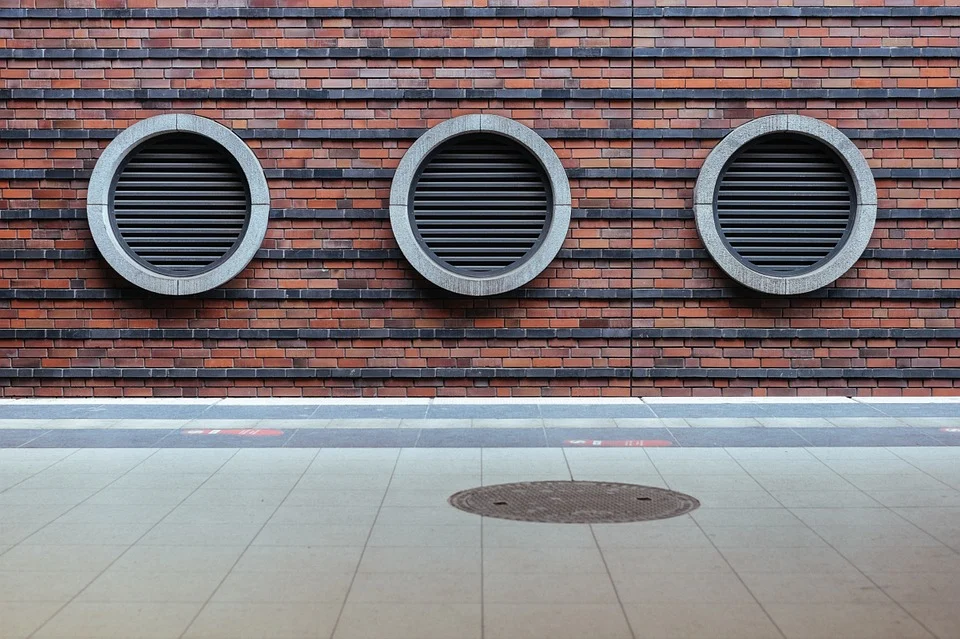House and garage ventilation system - what should it look like?
Home ventilation system might be hidden from sight, but it plays one of the most important roles in every apartment. It provides comfort inside. But not only! A ventilation systems reduce the levels of humidity in buildings. It eliminates fungi and mould, which are harmful for humans. It is a highly important aspect - especially for sensitive people who suffer from asthma or allergies.

How does a ventilation system work? The basic facts you should know
Ventilation at home is a quite simple issue. A properly constructed system allows for air circulation in every room of a building. The used air is being replaced with clean and fresh one - much healthier, as it does not contain any harmful substances or pollutants. Depending on its driving force, there are two types of ventilation:
- gravity, also called natural ventilation,
- forced, requiring the use of ventilators.
That not the only division. The experts claim that one can perfectly fit a ventilation system to any kind of building. In addition to the aforementioned types, there are also:
- heat recovery ventilation,
- mixed mode ventilation,
- supply ventilation,
- hybrid ventilation.
Natural ventilation at home - what is it?
A well designed system of air vents in a building allows for natural airflow. This type of ventilation might require using additional equipment, created specifically for home or office.
Natural ventilation has a lot of advantages. The greatest one is the fact that it doesn’t require any additional energy source. Because of that, the risk of damaging such system is small. Despite the fact that the installation provides unequal amounts of airflow in each of the rooms, it still works properly. Experts consider it foolproof.
In some cases natural ventilation is mandatory - it is regulated by the law. It is required for instance in buildings with a boiler room with open combustion chambers.
Natural ventilation is the most vulnerable in winter and summer. Such a system works thanks to differences in temperature outside and inside the building. The air inside should be warmer than outside. Very often, especially when the air vents are poorly designed, the air flows back to the building in summer. In winter, on the other hand, natural ventilation might be the cause of a low temperature inside.
Ventilation system at home - is advanced equipment worth it?
With regards to mechanical ventilation, there are several types of the system. Depending on the mechanism, one can distinguish systems such as:
- ventilation with the air forced outside the building,
- ventilation with the air forced inside and outside the building,
- heat recovery ventilation.
Ventilation with the air forced outside is one of the simplest systems. The forced airflow is pushed outside of the building. Fresh air enters the room through openings installed in the windows. Very often such systems are used as an addition to the natural ventilation. When are they typically installed? Fo instance in kitchen hoods installed over stoves to get rid of the hot air and steam.
Ventilation with the air forces inside and outside the building is very similar to the first one. The only difference lies in the fact that the air is forced with mechanical ventilators both outside and inside the building.
Ventilation with heat recovery uses specialised devices, called recuperators. They extract heat out of the air leaving the building and use it to warm up the fresh air entering the house. Such a solution is perfect especially in winter, when buildings lose a lot of heat.
An insufficient ventilation system poses a threat to your health
Apart from the already mentioned two situations, when you can be suspicious of you ventilation system being poorly designed or mismatched with your building, you might also encounter other issues. What else should be a matter of concern?
If you live in a multi-occupancy residential (block of flats or tenement), and you can smell what your neighbours cook, or worse - cigarette smoke in your bathroom or kitchen, something is surely wrong.
You might also see droplets of water on your windows or walls. You might suspect that the room is not being ventilated at all. Such a situation needs a quick reaction. High levels of humidity in a room might cause a growth of mould and fungi - difficult to get rid of. Such a situation poses a serious threat to one’s health.
Sometimes you might not notice that your ventilation is malfunctioning or not working at all. Instead, you might notice changes in your health. Sudden headaches for no reason, allergies, redness of eyes and always runny nose are the signs that you should take care of the ventilation. Do it as soon as possible - before it’s too late.
How does a ventilation system relate to the airtightness of a building in winter?
Many homeowners make a crucial mistake. It concerns ventilating their building in winter. Out of concern about excessive cooling of the rooms, they block off the windows or air vents so that the air cannot enter the building.
Contemporary ventilation systems, however, are designed in such a way that there is no need to do that. What’s more, because of the central heating, the rooms need to be extra ventilated. Opening the windows once in a few days for 5-10 minutes should be enough. If a room is ventilated this way, it will warm up better and faster.
Ventilation maintenance - is it necessary?
Many homeowners wonder whether ventilation system at home requires maintenance. In accordance with the law regulations, ventilation should be inspected at least once in a year. By doing that, one can be sure that the installation is efficient and does not pose a threat to the health of the occupants.
Ventilation should be tested by a legitimised specialist. The time of such a control is crucial as well. It should be done between late autumn and early spring, when central heating works and the results will be the most reliable.
Proper building ventilation is crucial, and it shouldn’t be neglected. Because we typically spend most of the time at home, one should make sure that it’s the place they feel safe and comfortable.
Garage ventilation - what does the law say?
Modern houses are often built in accordance with projects which include an attached garage as well. Garage ventilation is a very important issue.
Many countries regulate the technical conditions and location of a garage in a building. Because of the dangerous to human health fumes released by the engine, a garage should be properly ventilated. Therefore, each owner of a garage is obliged to provide a proper air circulation inside.
Garage ventilation system - types you can choose from
The aforementioned natural ventilation is one of the most popular and commonly chosen system for garages as well. The reason for that is mostly the high functionality of the system, as well as the low cost of installation.
This type of ventilation system works in the same way at home and in a garage. The airflow is possible thanks to the differences in the air density and pressure inside and outside the garage.
The air of higher temperature coming from the garage has lower density than the cooler air outside. That’s why it flows upwards. The whole convection process is possible thanks to air vents, used both by ventilation in the house and the garage.
If you decide to use such a ventilation system in the garage, consider getting rectangular or square brown air vents. House ventilation typically uses white, round air vents. The latter are particularly universal, as they match any interior - regardless of the style it has been designed in.
One can also use mechanical ventilation in the garage. This solution not only provides a lot of fresh air, but also dries it. Mechanical ventilation does not depend on weather conditions, so it works perfectly at any season. One necessary condition for such a ventilation system is a perfect airtightness of the room. Furthermore, the process of installation makes it a substantially more expensive garage ventilation. One should also be prepared for the costs of its maintenance.
Natural ventilation system in the house and garage does not require manual control or maintenance. And the aforementioned air vents are very cheap.
Garage ventilation system - fit it to the room
The construction of the room might determine what type of ventilation is the best for it. It is quite differect if the interiors are e.g. heated. The law clearly states what requirements certain system need and how they should be constructed.
Heated interiors
Heated garages are typically built in the house. It is highly important to ventilate such a garage, as it remove humidity from the room. The minimal requirements, in this case, involve creating a natural ventilation system with a vent running over the roof. The distance from the grid to the outlet should be at leat 3 m.
For heated rooms, one might consider mechanical ventilation. It is not very complicated to do - one only has to install a vacuum fan in one of the openings in the wall. A ventilator with an automatic switch is probably the most convenient solution. Keep in mind that it must be controlled by a carbon dioxide sensor. It generates unnecessary costs that everyone would rather avoid.
Unheated interiors
Choosing a ventilation system for an unheated room is an equally important issue. In this case, natural ventilation is the most popular option. The air exchange process is carried out by holes in external compartments placed in the opposite side walls or the garage door.
Natural ventilation is also regulated by law in most countries. When creating such a system, check what size the holes should be - it usually depends on the number of the parking spots in the garage.
A modern house and garage ventilation system - choose technology
The market offers new models of ventilators, characterized by their great functionalities. To make the ventilation process more efficient, manufacturers offer devices such as an exhaust fan, which turns on automatically when the door to the garage is opened. The device also works for some time after closing it. Products with a timer are equally popular.
An efficient ventilation in the house or garage is not just a system which improves the conditions in the room. Most importantly, it is an absolute essential thanks to which harmful for health or even life-threatening substances are removed from the closed interior.
FAQ
What is the best home ventilation system?
Natural ventilation is the best solution for every building. Sometimes it is obligatory - as it is regulated by the law. Keep in mind that in every case one should fit the ventilation system to the individual aspects of a building.


